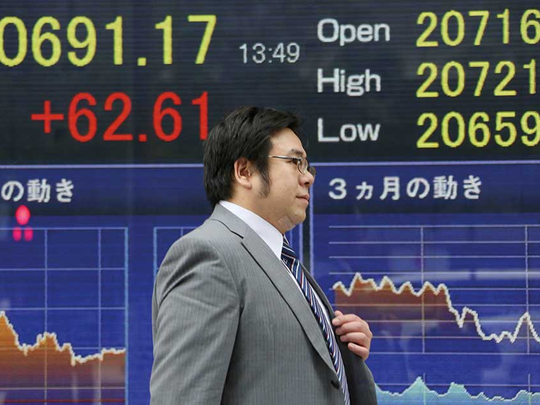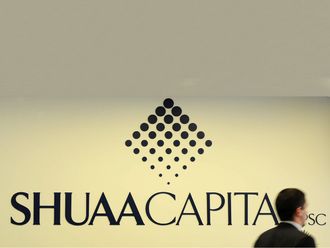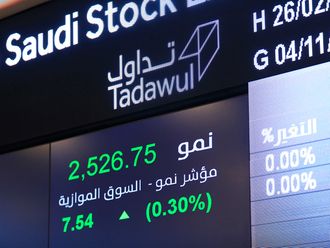
London: Record high world stocks fell for the first time in eight days on Friday, as jitters about Catalonia’s push to separate from Spain returned to Europe and bets on higher US interest rates sent the dollar to its highest since mid August.
Traders were preparing for their monthly instalment of US jobs data but there was too much movement in Europe to allow the normal pre-payrolls lull in market activity.
Spanish stocks and bond prices, which had rallied on Thursday, were sent tumbling back again as a Catalonian official said the region’s parliament would meet on Monday in defiance of a ruling by Spain’s constitutional court.
It sent the euro scuttling back below $1.17 (Dh4.30) again too and gave the dollar another leg up as it headed for a fourth consecutive week of gains, a move that is also starting to apply pressure to currency-sensitive emerging markets.
“Uncertainty about whether Catalonian parliament will meet on Monday persists,” Commerzbank strategists said in a note.
Friday’s other focus for markets will be US jobs data due out at 1230 GMT.
US stock index futures were flat after S&P 500 index set its sixth straight record closing high on Thursday as investors cheered significant headway made by Donald Trump’s administration to overhaul taxes.
Economists polled by Reuters expect the payrolls figures to show 90,000 new US jobs were created in September, down from 156,000 in August. It will also show how hurricanes Harvey and Irma affected the labour market.
US data this week has been solid on the whole. It has been one of the reasons for the dollar’s strength by also feeding bets that the Federal Reserve will raise US interest rates for a third time this year in December.
Interest rate futures traders are now pricing in an 86 per cent likelihood of a December rate hike, up from 78 per cent a week ago, according to the CME Group’s FedWatch Tool.
Aberdeen Standard Investments Senior Investment Manager James Athey said the question now was what happens next year.
Not only is inflation still subdued but the Fed could well get a new head.
“Investors need a lot of convincing about how far this Fed will hike without some decent wage growth and inflation,” he said.
“In any case, the Fed’s thinking is going to be extremely hard to predict over the coming months as so many members change.”
CALM OR HARM
It has been a far less impressive week for Britain’s sterling amid growing worries over Theresa May’s future as British prime minister, as well as over the health of the economy.
“What the country needs now is calm leadership and that is what I am providing,” May said in a statement on Friday, seeking to silence talk of a plot to oust her that has been swirling since a poorly-received keynote speech at the annual Conservative party conference on Wednesday.
Her comments did perk up the pound slightly, though that was after it had hit $1.3052, its weakest against the dollar in a month, and as it also headed for its worst week against the US currency in a year.
“Sterling is getting very vulnerable to headline risk again,” said Saxo bank head of FX strategy John Hardy.
The Australian dollar was down 0.3 per cent too at $0.7775 after falling to as low as $0.7743, its weakest since mid-July. The Aussie slid following media reports that Reserve Bank of Australia board member Ian Harper had said he is not ruling out an interest-rate cut.
In commodities meanwhile, Brent crude was down 0.1 per cent at $56.94 a barrel.
The futures contract had surged 2.1 per cent overnight on signs Saudi Arabia and Russia would limit production through next year, although caution towards a tropical storm heading for the Gulf of Mexico cut short the advance.
Copper also took a breather after its biggest jump in over two months had taken it to $6,724 a tonne. The metal used in power and construction has risen more than 21 per cent this year and was on track for a weekly gain of 3.6 per cent.












